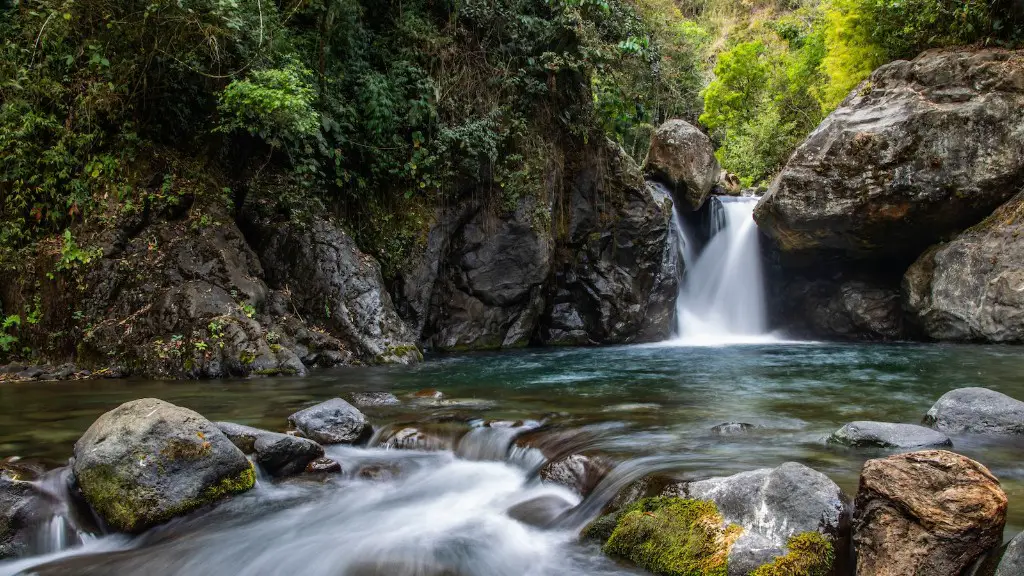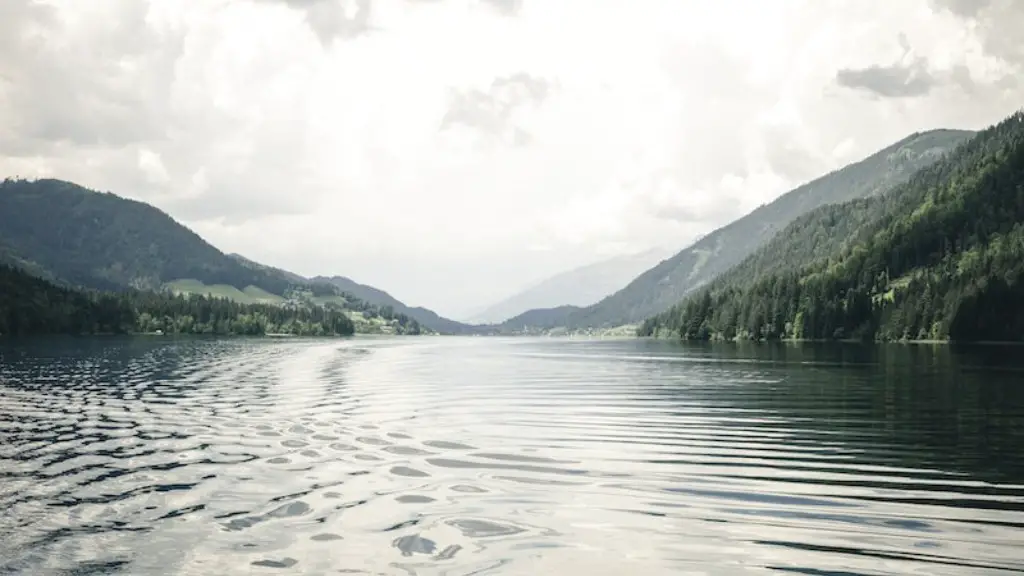The Amazon River is one of the most important rivers in the world. It is the largest river in South America and the second longest river in the world. The Amazon River is important for many reasons. It provides a home for many different types of plants and animals. It is also a source of food and water for people who live in the Amazon rainforest. The Amazon River is also an important transportation route for people and goods.
The Amazon River is the largest river in the world by discharge volume of water. It is also the second longest river in the world. The Amazon River is important for many reasons. It provides a source of fresh water for people and animals, it is home to a large variety of plant and animal life, and it plays an important role in the global water cycle.
Why is the Amazon so important?
The Amazon rainforest is one of the most biodiverse places on Earth. It is home to an estimated 10% of the world’s known species, including 40,000 plant species, 3,000 fish species, 1,294 bird species, 427 mammal species,428 amphibian species, and 378 reptile species.
The Amazon’s biodiversity is important for many reasons. First, it helps to maintain the planet’s ecosystems and helps to regulate the global climate. Second, the rainforest is a major source of food and medicine for humans. Third, the Amazon is a major source of income for many people, through activities such as tourism, fishing, and forestry. Finally, the Amazon is a unique and irreplaceable place, and its loss would be a tragedy for the entire planet.
Rainforests are important for many reasons. They help to stabilize the climate, produce rainfall, and are home to a huge diversity of plants and animals. Rainforests play a vital role in absorbing carbon dioxide, a greenhouse gas, and increasing local humidity. This helps to protect the planet from the effects of climate change.
What are two important things about the Amazon river
The Amazon River is the largest river in the world by volume, carrying more than five times the volume of the Congo or twelve times that of the Mississippi. It drains an area nearly the size of the forty-eight contiguous United States and has over 1,100 tributaries, 17 of which are longer than 1000 miles.
The Amazon’s cloud systems and its capacity to recycle water are crucial to the ecosystem. If they were to be disrupted, the ecosystem would tip over and irreversibly turn into dry savannah very quickly. Estimates of where this tipping point could lie range from 40% deforestation to just 20% loss of forest cover from the Amazon. This is a very serious issue that needs to be addressed to protect the Amazon and its many inhabitants.
What are 3 facts about the Amazon river?
The Amazon River is the largest river in the world by discharge volume and accounts for approximately one-fifth of the world’s total river flow. It is also the longest river in South America. The river is located in the Amazon rainforest and has its headwaters in the Andes Mountains of Peru. From there, it flows through Ecuador, Colombia, Venezuela, Bolivia, and Brazil before emptying into the Atlantic Ocean.
The Amazon River is home to a diverse array of plant and animal life. More than 3,000 species of fish can be found in the river, including the giant arapaima and the piranha. The river is also home to dolphins, turtles, and manatees. The Amazon River basin is also home to a variety of bird species, including the macaw, the hoatzin, and the king vulture.
The Amazon River has long been an important waterway for trade and transportation. It was an important factor in the Spanish colonization of South America and was a key route for the transport of gold and silver from the mines in Peru to the port of Panama. In the 19th century, the Amazon River was a key route for the transport of rubber from Brazil to Europe.
The Amazon River
The Amazon rainforest is a key player in regulating the world’s oxygen and carbon cycles. It produces approximately 6 percent of the world’s oxygen, and it is also thought to play a role as a carbon sink, absorbing large amounts of carbon dioxide from the atmosphere. The Amazon rainforest is a vital part of our planet’s ecosystem, and it is important to protect it.
Why is the Amazon river important for wildlife?
The Amazon is one of the world’s most unique and important ecosystems. It is home to millions of species of plants and animals, many of which are still undiscovered. The Amazon is a vital refuge for rare and endangered species like the jaguar, harpy eagle, and pink river dolphin. It is also home to thousands of species of birds and butterflies. The Amazon is a vital part of our planet’s biodiversity and we must work to protect it.
The Amazon rainforest is the largest tropical rainforest in the world, covering an area of over 67 million square kilometers. It is home to an estimated 10% of the world’s known species of plants and animals, and is thought to play a significant role in global climate change. The Amazon is also home to47 million people, including more than 2 million indigenous people. Here are some more fascinating facts about the Amazon rainforest:
The Amazon basin covers an area of approximately 7 million square kilometers, making it the largest river basin in the world.
Approximately 20% of the world’s oxygen is produced by the Amazon rainforest.
The Amazon rainforest is home to the world’s largest collection of freshwater fish, with over 3,000 species.
The Amazon rainforest receives an average of 9 meters of rainfall per year.
There are more than 1,000 species of trees in the Amazon rainforest.
The Amazon rainforest is home to the world’s largest bird, the Harpy Eagle, which has a wingspan of up to 2.8 meters.
The Amazon rainforest is home to the world’s largest mammal, the Blue Whale.
The Amazon rainforest is home to the world
What is the most important thing about the Amazon rainforest
The Amazon rainforest is one of the most important ecosystems on Earth. It is responsible for producing more than 20% of the world’s oxygen, which is why it is often referred to as the “lungs of the Earth.” The Amazon covers only 34 million square miles, which is less than 2% of the Earth’s surface, but it produces more than 10 times that amount of oxygen.
The Amazon River is one of the world’s longest and most voluminous rivers. It twists and turns through the Amazon Rainforest, giving it its length. Its width and depth contribute to its large volume, making it the widest river in the world. Some people refer to it as the River Sea.
Why is it important to protect the Amazon river?
The Amazon River is the longest river in the world and is an important part of the earth’s ecosystem. However, the river is under constant threat of degradation and contamination. Without the Amazon River, millions of people would be left without drinking water, a source of protein from local fish, and their livelihoods. We need to protect this river and its ecosystem in order to preserve the earth’s resources.
The Amazon rainforest is vital to Brazil’s economy, contributing an estimated $82 billion a year from products including rubber and timber. In recent months, the Amazon region has been hit by thousands of fires that collectively have cleared more than 7,400 square miles of rainforest. The loss of this valuable resource is a devastating blow to Brazil’s economy, and the long-term impact of the fires will be felt for years to come.
How does the Amazon river affect the world
Well tuned, the Amazon’s hydrological engine plays a major role in maintaining the global and regional climate.
Water released by plants into the atmosphere through evapotranspiration (evaporation and plant transpiration) and to the ocean by the rivers, influences world climate and the circulation of ocean currents.
The Amazon is a key player in the global water cycle, and its health is essential for the health of the planet.
A recent study has shown that rainforests are more resilient to deforestation than previously thought. This is good news for the environment, as it means that these important ecosystems are less likely to disappear entirely. However, this does not mean that we can continue to degrade and destroy rainforests with impunity. These ecosystems are still at risk, and need our protection.
What happens if we lose the Amazon?
The Amazon rainforest is a vital part of the world’s ecosystem and its destruction would lead to devastating consequences. Warmer temperatures, frequent floods, and long droughts would be some of the effects of the disappearance of the Amazon rainforest. The gradual decrease in rainfall would lead to more pests and disease, and less water would make it difficult to grow and maintain crops. These effects would be felt around the world and would have a devastating impact on the environment and human populations.
The Amazonian Manatee is the largest water-dweller mammal in the Amazon. It can grow to be 28m long and weigh up to 540kg. The female of the species is usually larger than the male.
Warp Up
The Amazon River is important because it is the longest river in the world. It is also important because it provides a home to a large number of plant and animal species. Additionally, the Amazon River is a source of fresh water for many people who live in South America.
The Amazon River is one of the most important rivers in the world. It is the largest river in South America and the second longest river in the world. The Amazon River is important because it provides a source of water for millions of people, it is home to a variety of plant and animal life, and it is an important economic resource.





